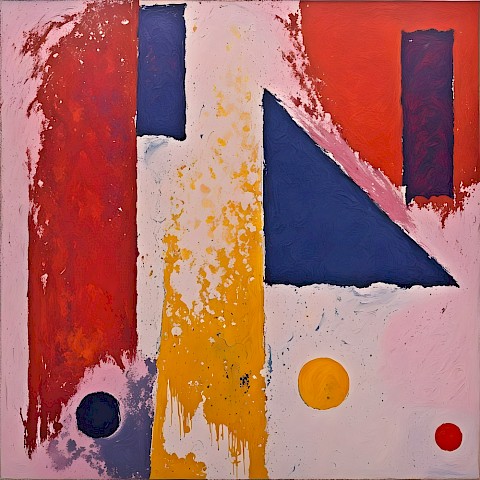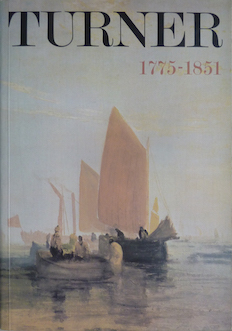|
02 X 2025 |
16. The Alps and Central Europe 1833-45
567 - Snow-Storm, Avalanche, and Inundation - a Scene in the Upper Part of Val D’Aout, Piedmont | |

| ||
|
Turner revisited the Alps in the summer of 1836 in company with his friend and patron H. A. J. Munro of Novar, who subsequently bought this picture; one of the places they visited was the Val d'Aosta. In this picture Turner returned to both the scene and the dominant vortex of 'Hannibal crossing the Alps' of twenty-five years earlier (see No.88). Here the application of paint is much more uniform, furthering the impression that all the elements in the painting, whether solid or vaporous, are united in the cataclysmic force of nature. Only the figures stand apart from this overall treatment, small puny victims of the irresistible storm. Blackwood's Magazine, never the most appreciative of Turner's critics, spent most of its review in the July-December number attacking Turner's other contributions to the 1837 exhibition, but dismissed this work as an excuse for as much white as he pleases ... Has any accident befallen Mr. Turner's eyes? Have they been put out by his own colours?'. The Spectator for 6 May on the other hand termed it 'extraordinary for colour and effect. This picture was exhibited again at the British Institution in 1841 together with 'Rockets and Blue Lights (close at hand) to warn Steam-Boats of Shoal Water' previously exhibited at the Royal Academy the year before (Clark Art Institute, Williamstown, Mass.; repr. Rothenstein and Butlin 1964, pl.113). Both were savagely attacked in the Athenaeum for 6 February 1841: 'We have heard of a caricature current in Rome, in which a painter was seen charging a pistol with gamboge, carmine, and ultramarine, his easel standing for target ... In his Snow-Storm ... he [Turner] has loaded his weapon of offence with such pigments as the Quakers love, and shot a round of drab, dove-colour, and dirty white, with only a patch of hot, southern red, in the foreground, to heighten, as it were, the horrors of a snow scene by a few probable touches of fire and sunshine. To speak of these works as pictures, would be an abuse of language.' Other reviewers mixed praise with the usual complaints of extravagance. For the Spectator, 6 February, it was 'a wondrous arrangement of tints, and one can make out something like a chaos of elements; but the scene wants alpine grandeur' '. For the Art Union, 15 February, both pictures were 'Wonderful, as examples of colour - prodigious as eccentric flights of genius. They would be equally effective, equally pleasing, and equally comprehensible if turned upside-down; indeed we are not quite sure that one of them has not actually been reversed.' An image generated by an AI Machine Learning Model Property of the artist. | ||
